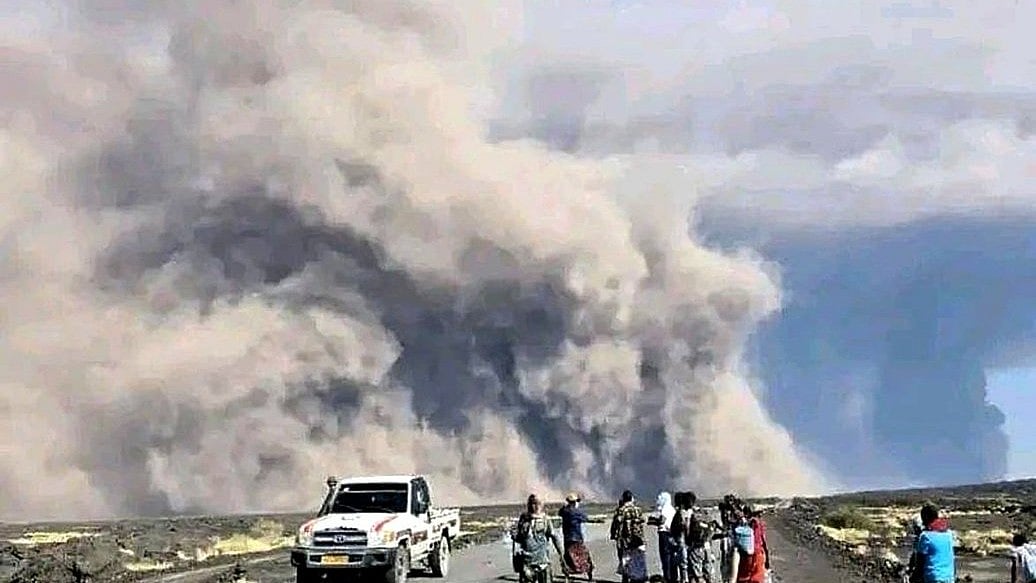Ethiopia’s Volcano Erupts After 12,000 Years: How Delhites Can Protect Themselves From Smoke Reaching The City Tonight?
A long-dormant Ethiopian volcano, Hayli Gubbi, erupted on November 23, 2025, sending a massive ash cloud toward North India. The plume may affect Delhi, Rajasthan, Gujarat, Punjab, and Haryana tonight, potentially reducing visibility. Although high in the atmosphere, fine ash could still irritate eyes and lungs. People are advised to stay indoors, use masks, and follow official advisories

X
The Hayli Gubbi volcano in Ethiopia’s Afar region erupted on November 23, 2025, breaking nearly 12,000 years of dormancy. The unexpected eruption sent a massive plume of volcanic ash, sulfur dioxide, and aerosols high into the atmosphere, capturing global scientific attention due to its scale and rarity.
Meteorologists report that the ash cloud is traveling at about 100–120 km/h and is projected to reach parts of Delhi, Rajasthan, Gujarat, Punjab, and Haryana by late evening. The plume currently occupies high altitudes, between 15,000 and 45,000 feet, reducing intense ground-level ashfall. However, fine particles may still descend, potentially darkening skies and reducing visibility for a short period.
Impact on Air Travel and Public Health
Volcanic ash is a known aviation hazard, capable of damaging airplane engines and navigational sensors. Indian flight authorities have issued warnings to airlines, and temporary route adjustments or delays are possible as precautionary measures.
Even limited ash exposure can irritate the eyes, throat, and lungs. People with asthma, bronchitis, or weakened immunity should take additional precautions during the ash cloud’s passage.
How to stay safe during the ash cloud event
If you live in an area expected to be affected, follow these recommendations:
-Stay Indoors: Limit outdoor movement until the cloud passes.
-Seal Entry Points: Close windows and doors; use damp towels to block gaps.
-Use Masks if Outside: Wear a proper N95 respirator for fine particle protection.
-Protect Eyes and Skin: Use glasses/goggles and wear full-sleeve clothing.
-Avoid Outdoor Air Intake: Turn off appliances that bring air inside from outdoors.
-Drive Only if Necessary: Keep windows up and drive slowly in low visibility.
-Do Not Dry Sweep Settled Ash: Lightly dampen before cleaning to prevent particles from becoming airborne again.
-Monitor Official Updates: Keep track of advisories on flights, weather, and air quality.
This event underscores how volcanic activity, even from a remote region thousands of kilometers away, can influence air quality, travel systems, and daily life in other continents. Scientists are watching closely to determine whether more eruptions might follow in the Afar rift zone.
North India may temporarily experience hazy skies, minor air-quality dips, and possible flight disruptions. Staying indoors, protecting your breathing, and following safety advisories remain the most effective precautions as the ash plume moves over the region.
RECENT STORIES
-
-
-
-
-